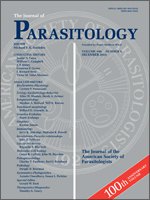Mesodesma donacium is a dominant species on sandy beaches along the Chilean coast. However, the only previous parasite records for this species were obtained for the northern Chilean coast (20°S–33°S), which dealt with cestodes, polychaetes, and copepods. In this study, the symbiotic fauna of M. donacium in its southern distributional range is reported, and the geographical variations in the occurrence of this fauna are evaluated. A total of 565 individuals of M. donacium were captured by local fishermen from 5 localities: Mehuín (MEH) (39°26′S), Carelmapu (CAR) (41°44′S), Ancud (ANC) (41°53′S), Cucao (CUC) (42°35′S), and Quellón (QUE) (43°24′S), covering a total distance of 450 km. To collect metazoan symbionts, the valves, mantle, gills, gonad, and digestive gland of each specimen of yellow clam were examined, and symbiont identifications were made via morphological and genetic analyses. The prevalence and mean intensity of infestation were calculated for each symbiotic species. Univariate and multivariate analyses were performed to evaluate the differences in symbiotic load between localities. Seven metazoan symbiotic species were recorded. The most abundant species were Paranthessius mesodesmatis, Monorchiidae gen. sp., and Paravortex sp. The copepod P. mesodesmatis and metacercaria Monorchiidae gen. sp. showed a high prevalence in all localities, but their intensity of infection varied among localities. The turbellarian Paravortex sp. was most frequently associated with ANC and CUC. The digenean Sanguinicolidae gen. sp. was recorded only at CAR, and the polychaete Spionidae gen. sp. was recorded only at MEH. In its southern distributional range, M. donacium was characterized by an absence of cestodes. This absence can be explained by the absence of the definitive host. The local environmental conditions in the southern range of the host could explain the differences in symbiotic composition among localities.
How to translate text using browser tools
1 December 2014
Metazoan Symbionts of the Yellow Clam, Mesodesma donacium (Bivalvia), in Southern Chile: Geographical Variations
Z. López,
L. Cárdenas,
M. T. González
ACCESS THE FULL ARTICLE

Journal of Parasitology
Vol. 100 • No. 6
December 2014
Vol. 100 • No. 6
December 2014




